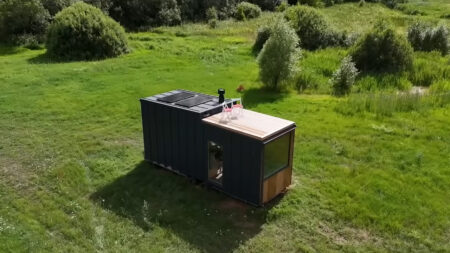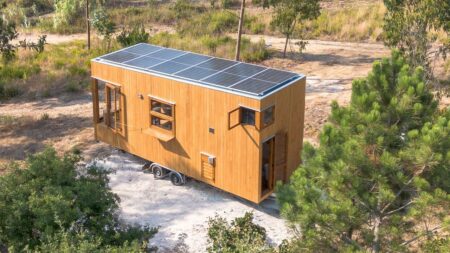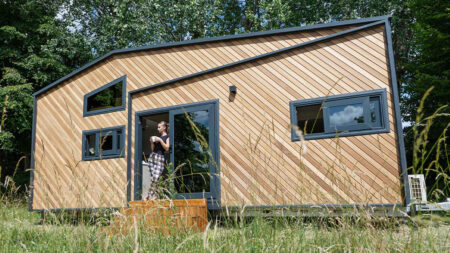The architecture industry can leave a major impact on the environment through harmful construction practices. To that end, many designers and architects are implementing sustainable materials with energy-efficient qualities in their buildings. Architect Michael Quirk created a quaint retreat with an environmentally-conscious footprint in forested Nederland, Colorado.
Magnolia is a net zero-carbon tiny cabin that is built using local and reused materials. Built on stilts, Quirk completed the cabin with hemp insulation and locally-sourced wood varieties with energy-efficient features such as solar panels. Paired with an off-grid renewable energy system, these elements contribute to a low carbon footprint living experience in the middle of the jungle.
With a natural context – both inside and out – the 120-square-foot Magnolia eco cabin features birch plywood, reused treated cedar shiplap siding, and Pine Shou Sugi Ban charred wood siding. The accent metal panels add to the rustic charm of the forested cabin while blending its exterior with the surroundings. Windows and the door are also made from reused wood.
The front green door opens into the living room that features a bench with space to store firewood, a dining/work table next to a window, a fireplace, and storage-integrated stairs with a ladder to the loft. The interior is light-filled thanks to large windows and is insulated with hempcrete and hemp wood.
Also Read: Tiny House Ericeira is Sustainably Idealized for the Mediterranean Climate
On the metal roof – which is made from metal panels from past architectural project leftovers – two solar panels provide sustainable energy to power the cabin. Upstairs, a spacious loft features a bed, and two big windows to pour in natural light, and fresh forest air. While the cabin is without running water, a bathroom, or a kitchen, it is functional as a weekend getaway rather than a full-time dwelling.
This tiny cabin is a wonderful example of easy it is to achieve the off-grid lifestyle without impacting the surroundings with sustainable architectural practices. Michael Quirk aimed to highlight building methods and materials with a lesser carbon footprint than traditional construction, which is fair to say was achieved quite well.
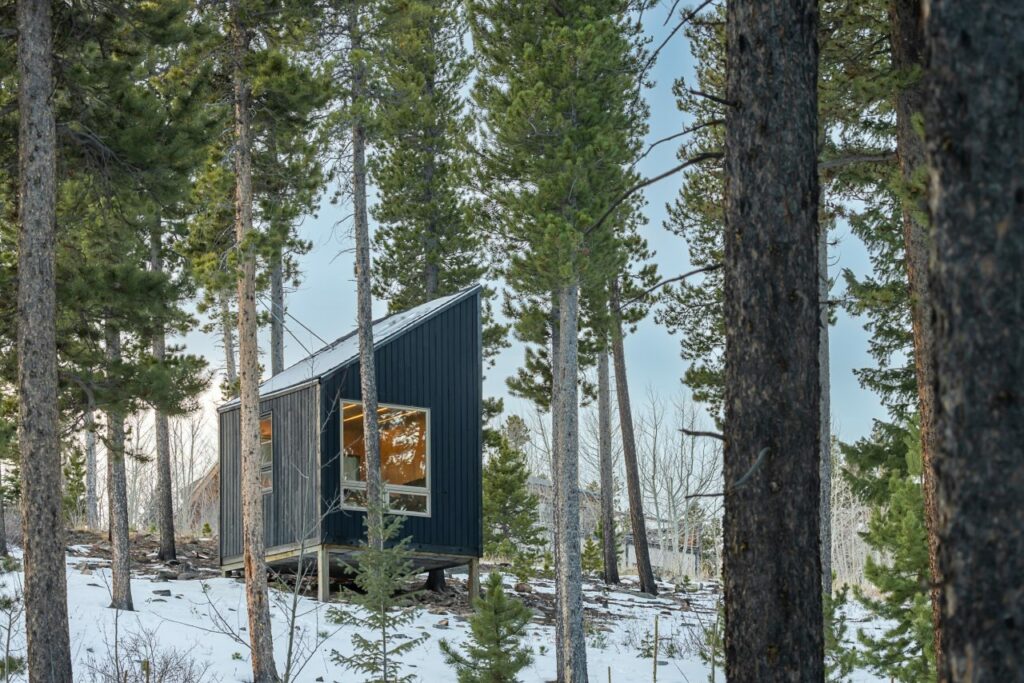
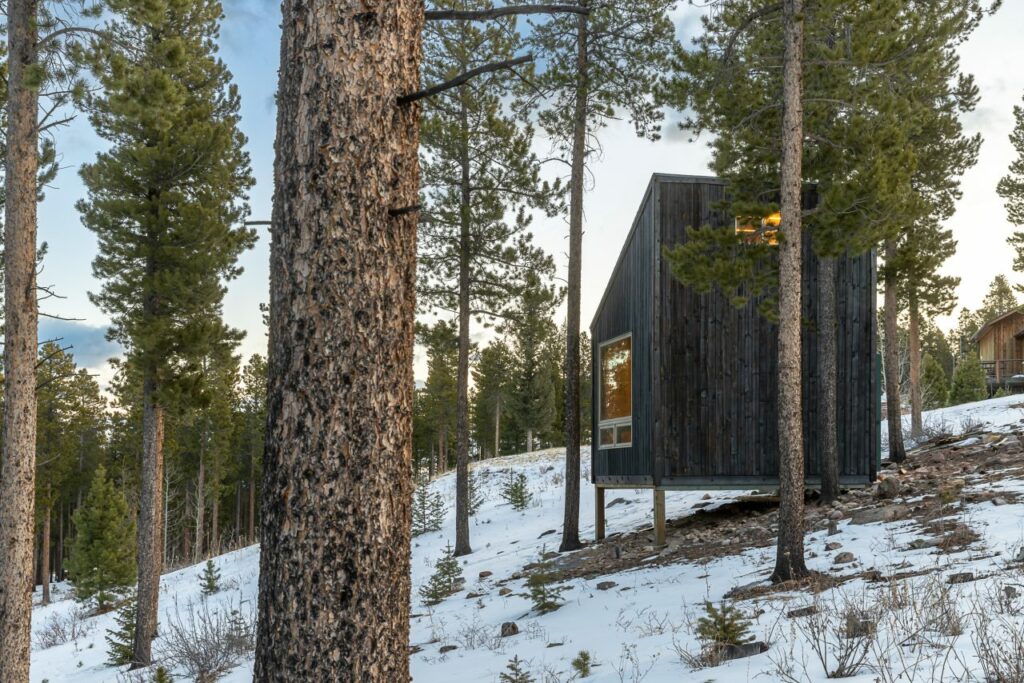
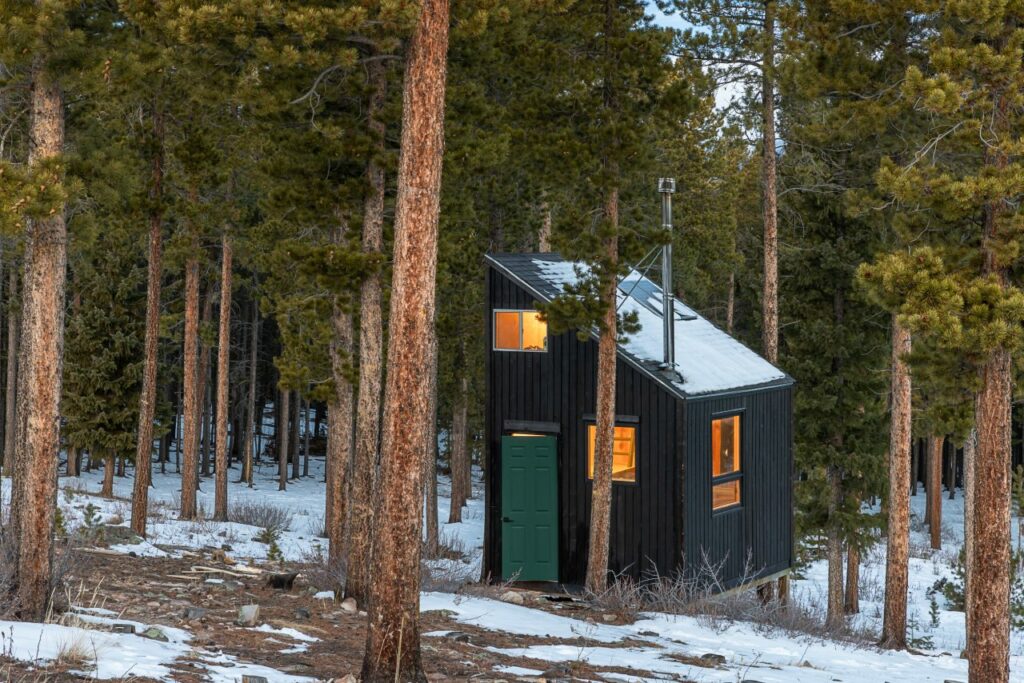
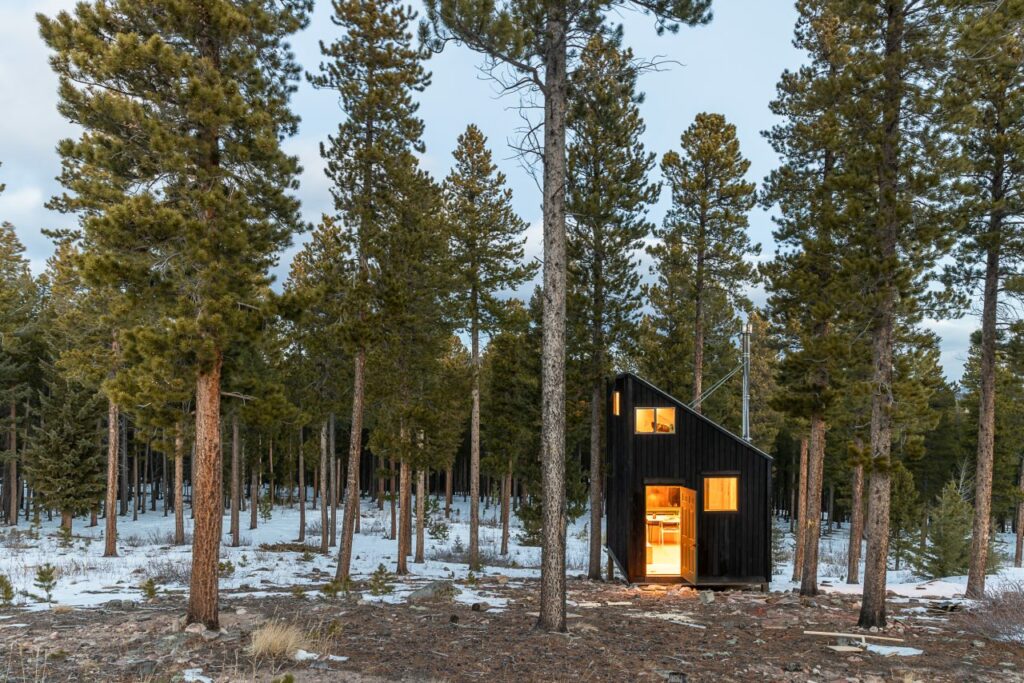
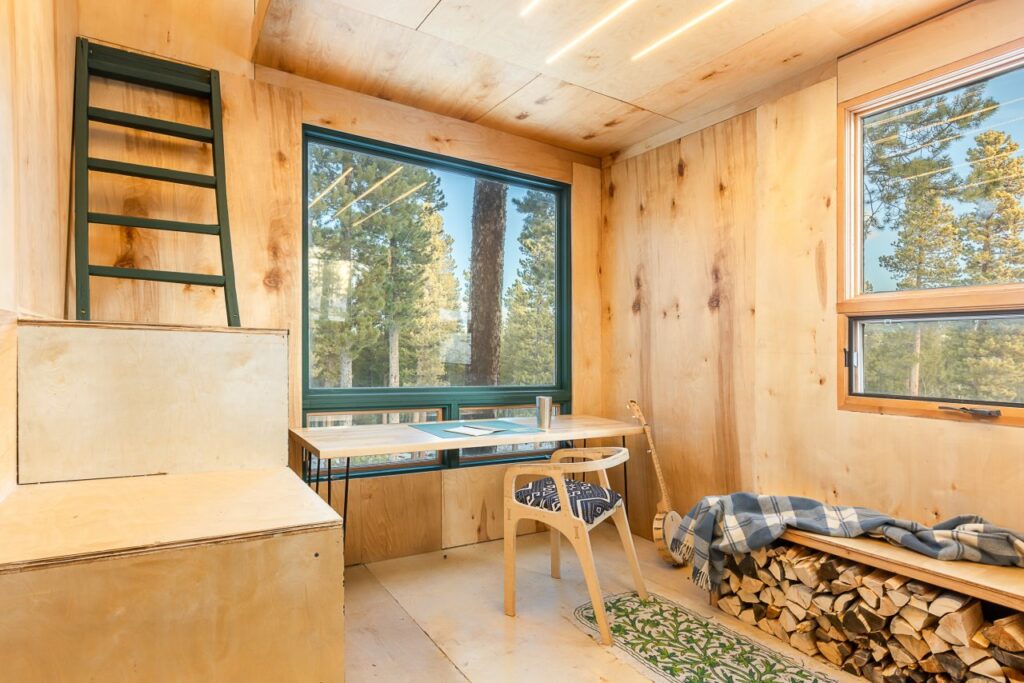
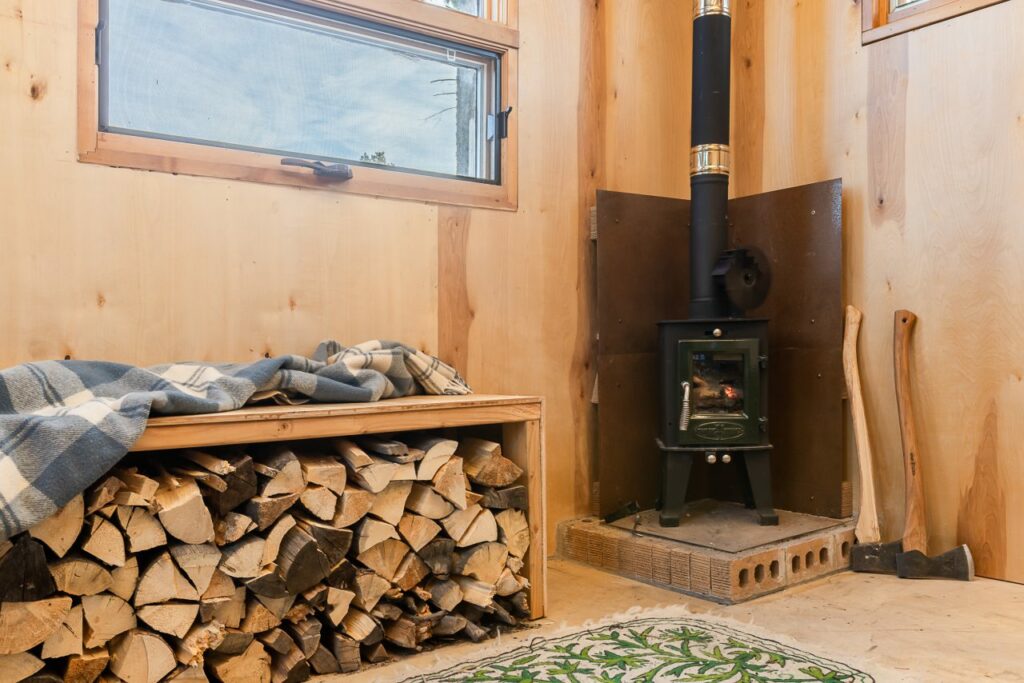
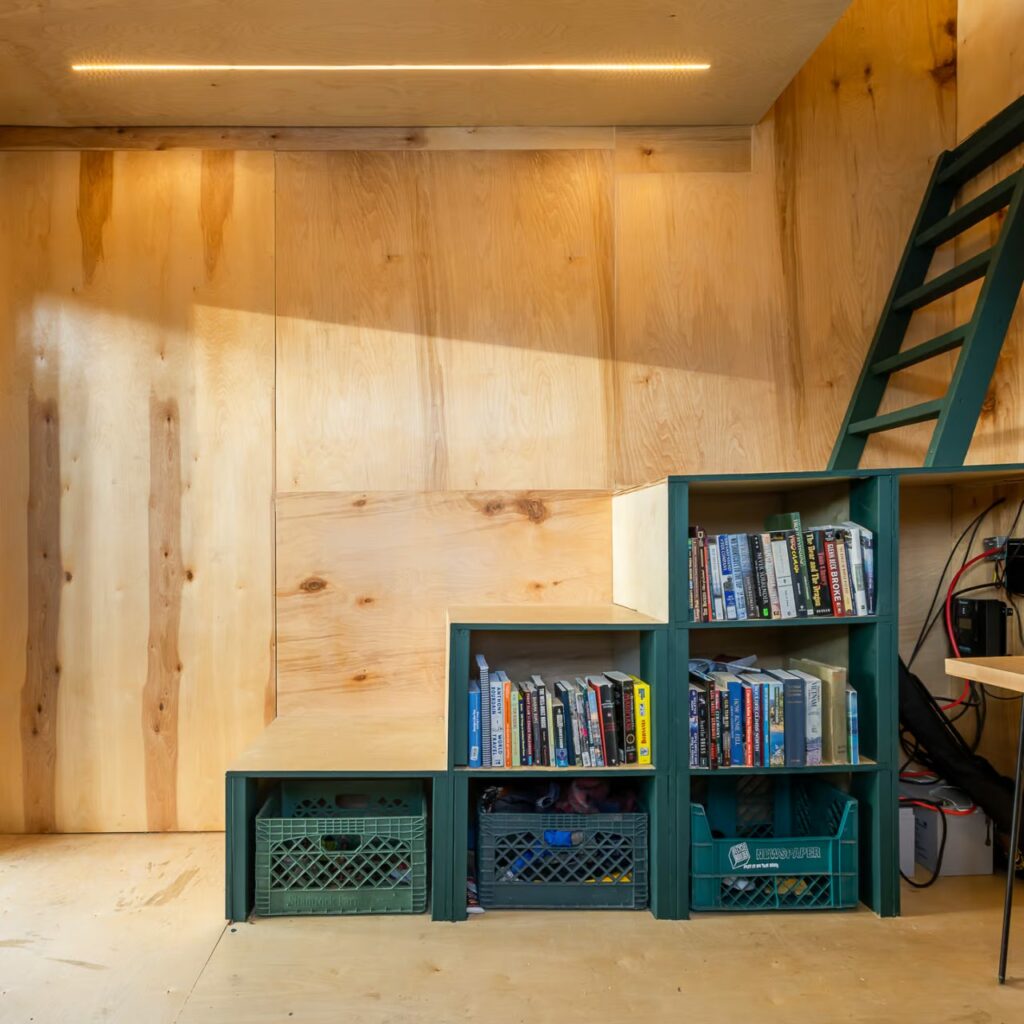
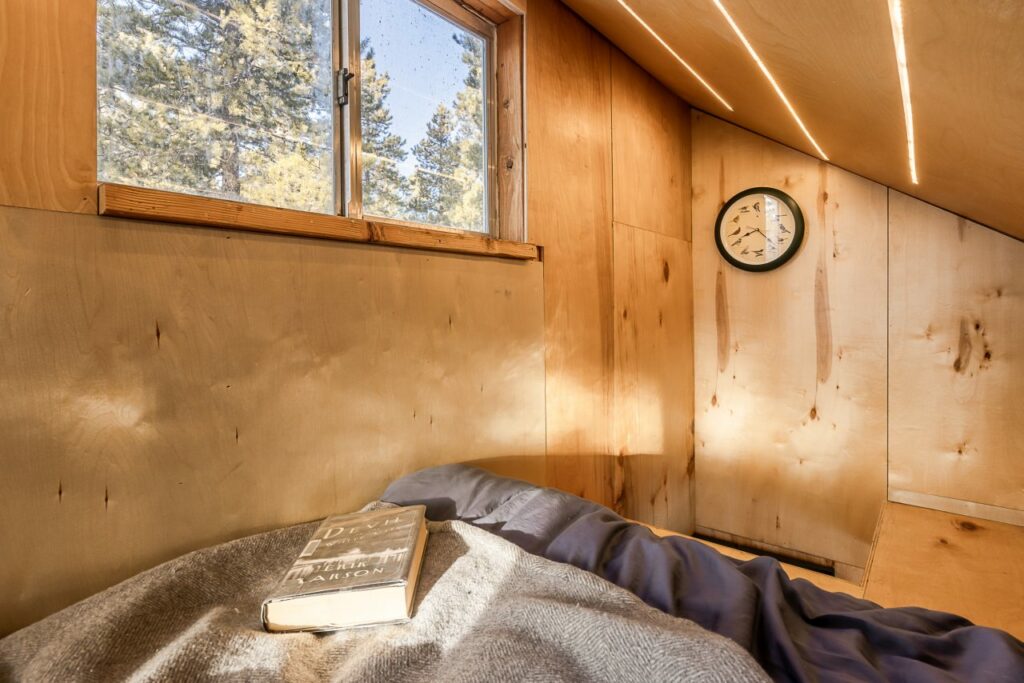
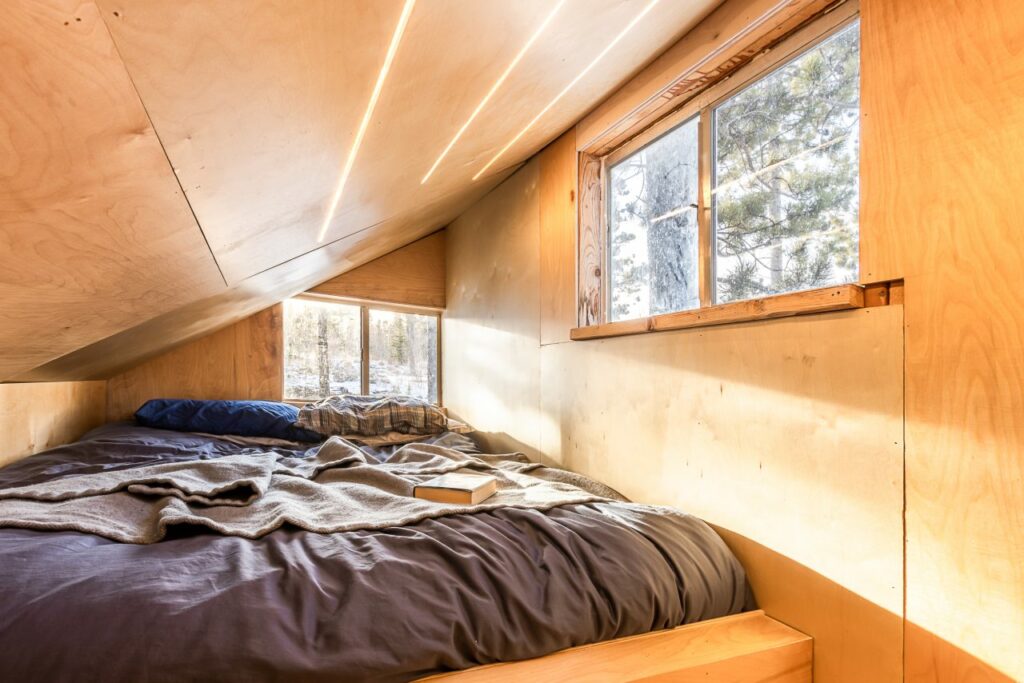
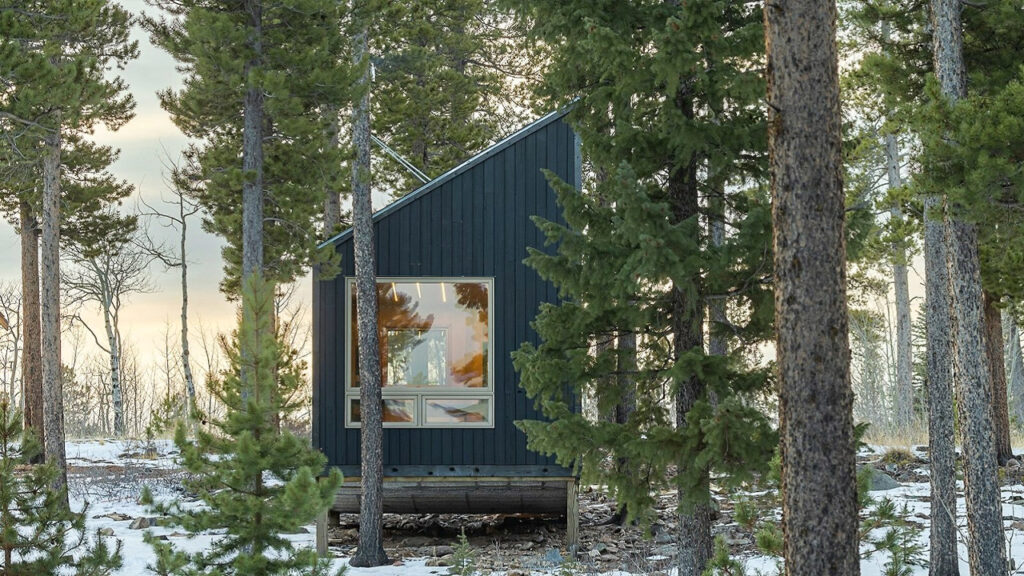
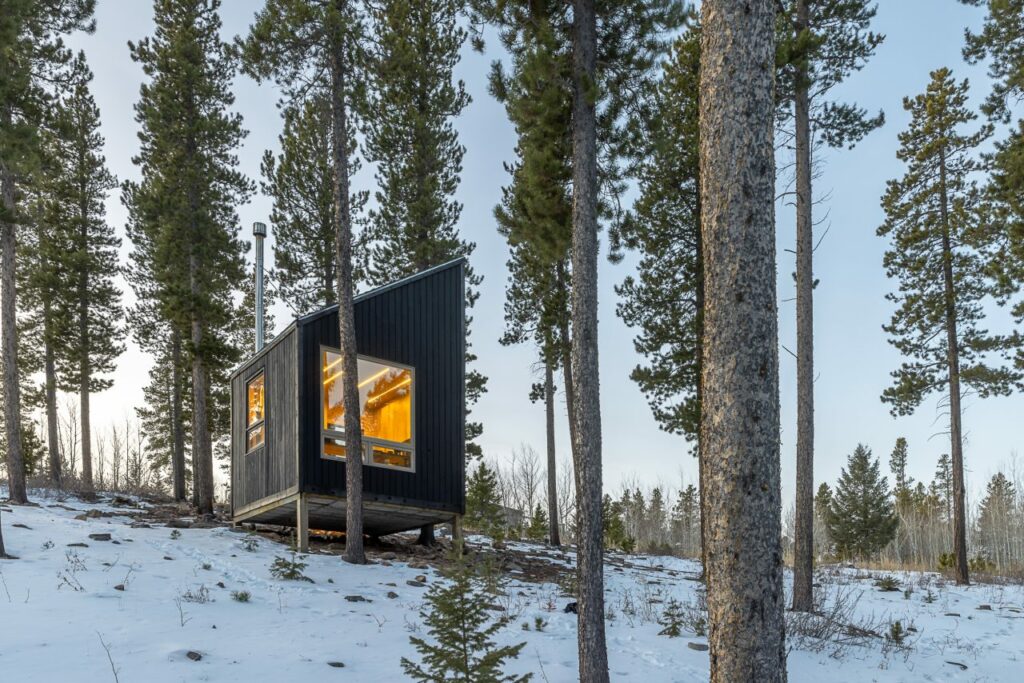
Follow Homecrux on Google News!

